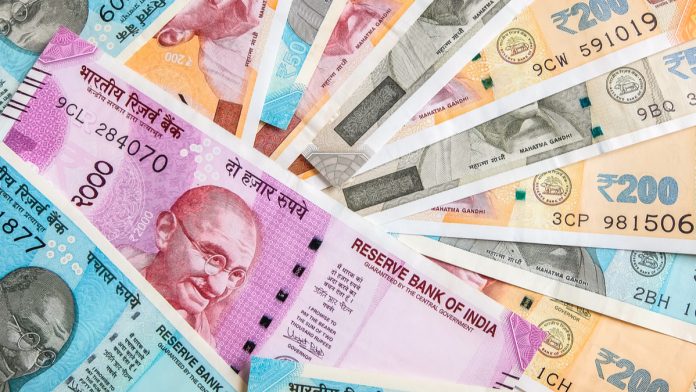- Indian Rupee (INR) falls despite high CPI expectations
- RBI kept rates unchanged
- US Dollar (USD) falls rises with eyes on inflation data tomorrow
- US jobless claims due later
The US Dollar Indian Rupee (USD/INR) exchange rate is moving higher on Thursday after mild losses in the previous session. The pair settled -0.04% on Tuesday at 75.35. At 10:00 UTC, USD/INR trades +0.22% at 75.52.
India’s retail inflation is expected to have accelerated in November as the price of fruit and vegetables increased. Economists and analysts forecast that consumer prices will have rise to 5.1% last month, up from 4.48% in October and taking the rate closer to the upper band of the Reserve Bank of India’s 2% -6% target range.
The data is due after the Indian central bank left monetary policy unchanged in their meeting this week. The RBI said that it expects CPI at 5.1% for Q3 and 5.7% for Q4.
Separately, industrial output increased by 4% in October compared to a year ago, up from 3.1% in September.
The US Dollar is trading higher across the board. The US Dollar Index, which measures the greenback versus a basket of major currencies trades +0.19% at the time of writing at 96.08, paring losses from the previous session.
The US Dollar is pushing higher as risk sentiment remains upbeat surrounding Omicron, even as it spreads rapidly around the globe. Yesterday Pfizer announced that its COVID vaccine can neutralize Omicron with 3 doses. Governments must now ramp up vaccine booster programmes in order to avoid more lockdowns.
Attention is also now turning to tomorrow’s inflation data. Inflation in October jumped to 6.2%, analysts expect inflation to continue rising in November to 6.8%. A high reading could prompt speculation that the Fed will accelerate its bond purchasing programme which would mean a sooner interest rate rise.
Later today, US jobless claims data is expected to show that initial jobless claims remained steady at 222k, the same as last week. Yesterday JOLTS job opening data showed that there are 11 million unfilled vacancies in the US.





